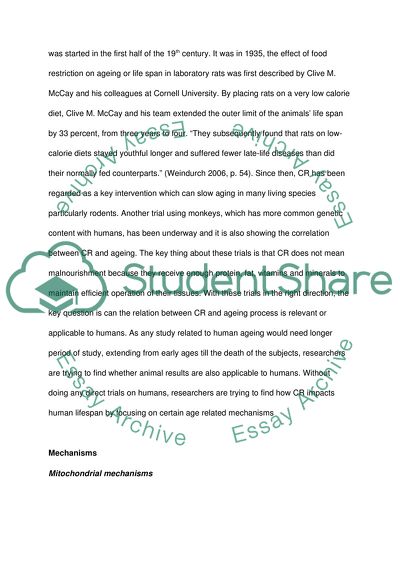Cite this document
(Calorie Restriction Term Paper Example | Topics and Well Written Essays - 2500 words, n.d.)
Calorie Restriction Term Paper Example | Topics and Well Written Essays - 2500 words. Retrieved from https://studentshare.org/health-sciences-medicine/1734781-calorie-restriction-is-known-to-extend-both-average-and-maximal-lifespan-critically-evaluate-the-mechanisms-by-which-this-is-thought-to-occur
Calorie Restriction Term Paper Example | Topics and Well Written Essays - 2500 words. Retrieved from https://studentshare.org/health-sciences-medicine/1734781-calorie-restriction-is-known-to-extend-both-average-and-maximal-lifespan-critically-evaluate-the-mechanisms-by-which-this-is-thought-to-occur
(Calorie Restriction Term Paper Example | Topics and Well Written Essays - 2500 Words)
Calorie Restriction Term Paper Example | Topics and Well Written Essays - 2500 Words. https://studentshare.org/health-sciences-medicine/1734781-calorie-restriction-is-known-to-extend-both-average-and-maximal-lifespan-critically-evaluate-the-mechanisms-by-which-this-is-thought-to-occur.
Calorie Restriction Term Paper Example | Topics and Well Written Essays - 2500 Words. https://studentshare.org/health-sciences-medicine/1734781-calorie-restriction-is-known-to-extend-both-average-and-maximal-lifespan-critically-evaluate-the-mechanisms-by-which-this-is-thought-to-occur.
“Calorie Restriction Term Paper Example | Topics and Well Written Essays - 2500 Words”. https://studentshare.org/health-sciences-medicine/1734781-calorie-restriction-is-known-to-extend-both-average-and-maximal-lifespan-critically-evaluate-the-mechanisms-by-which-this-is-thought-to-occur.


